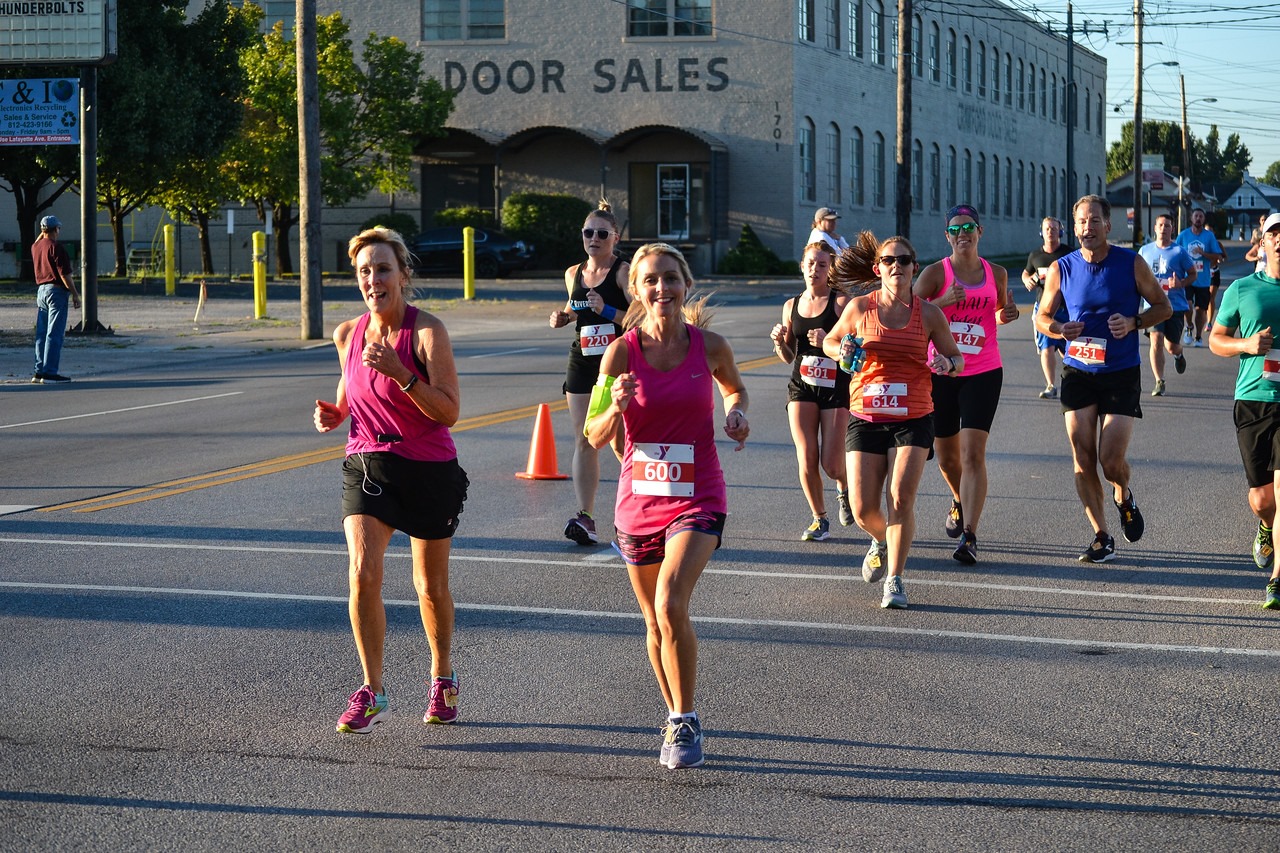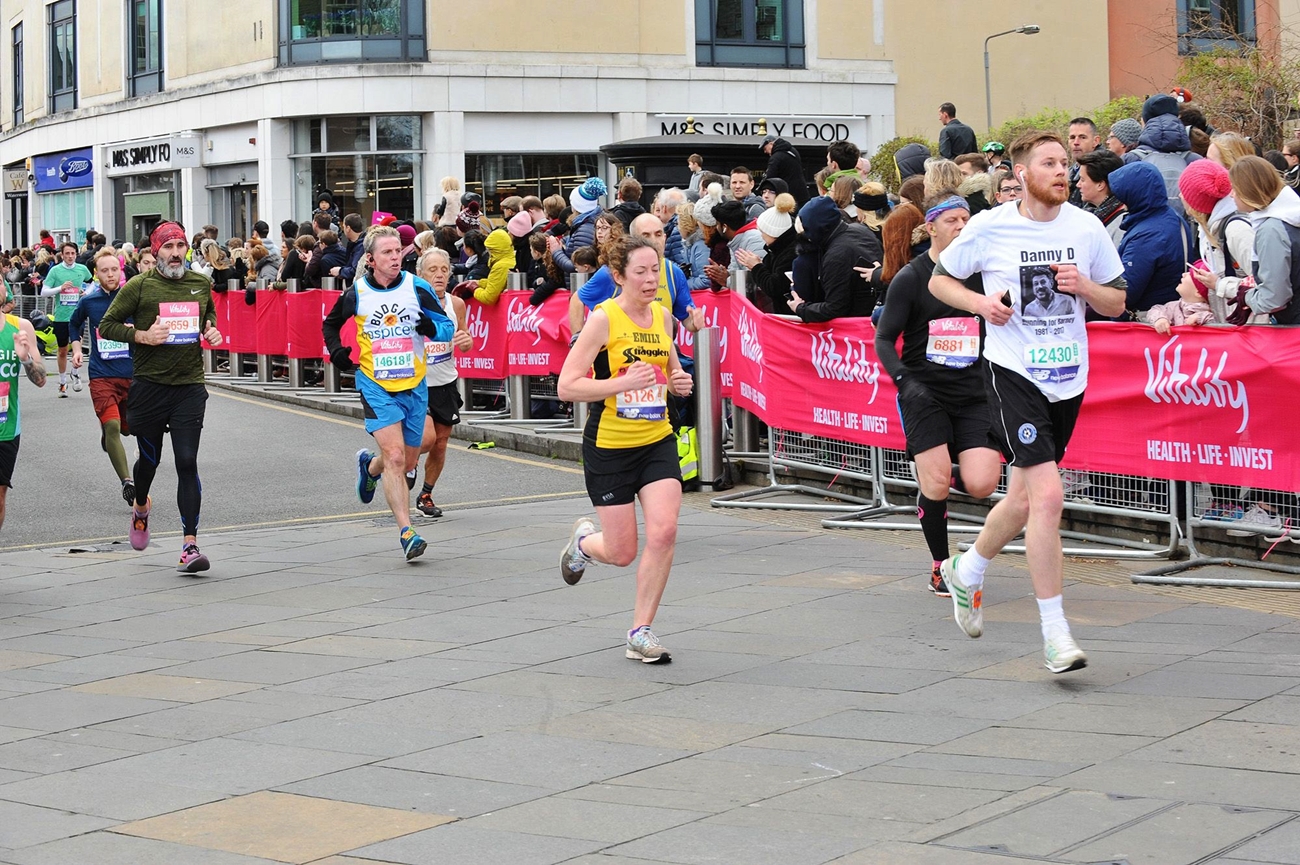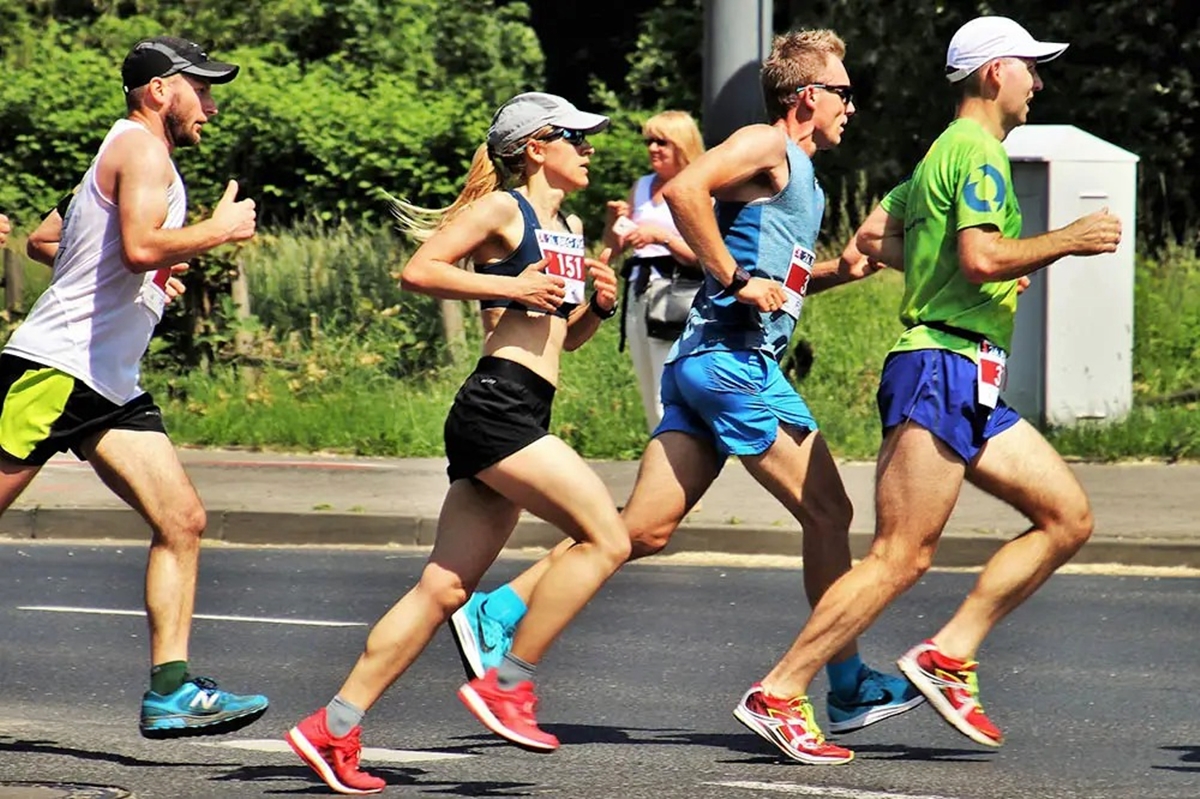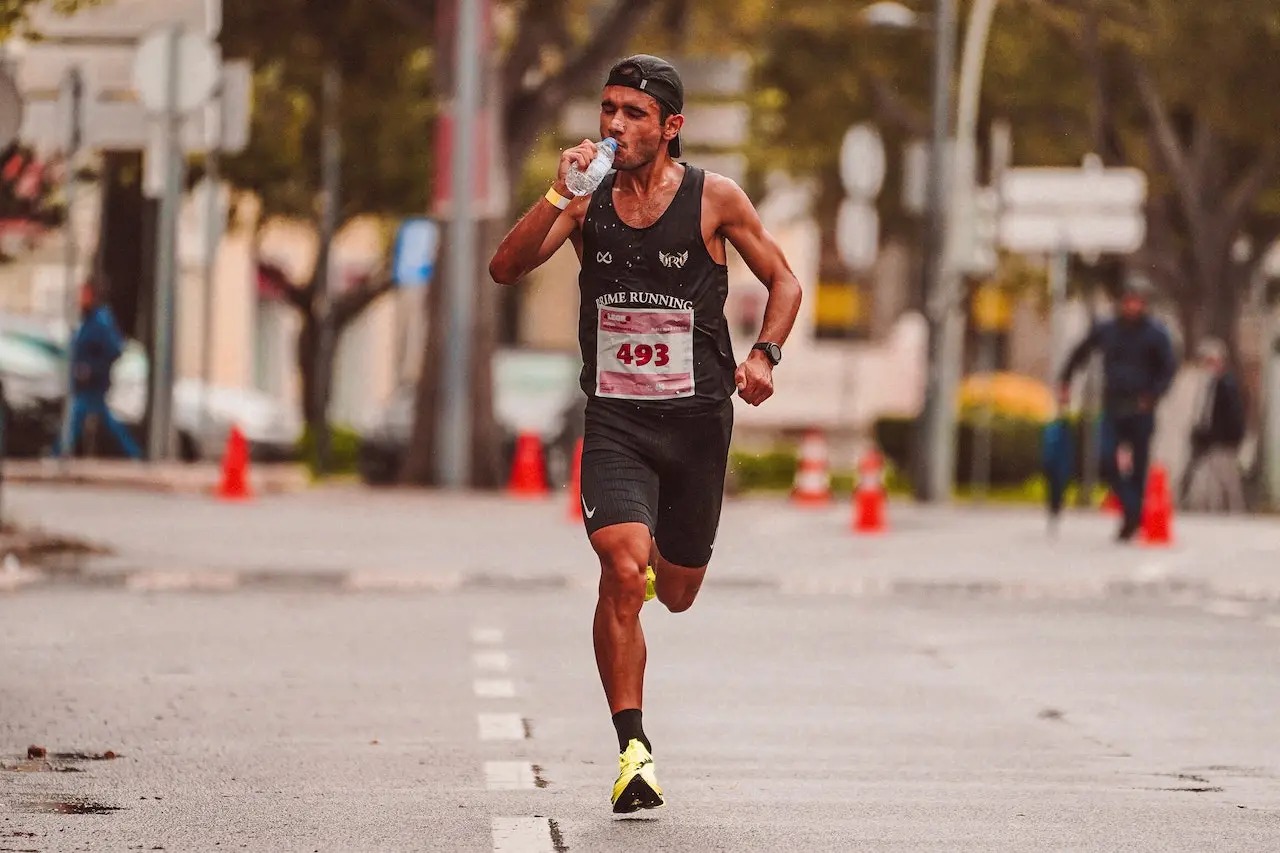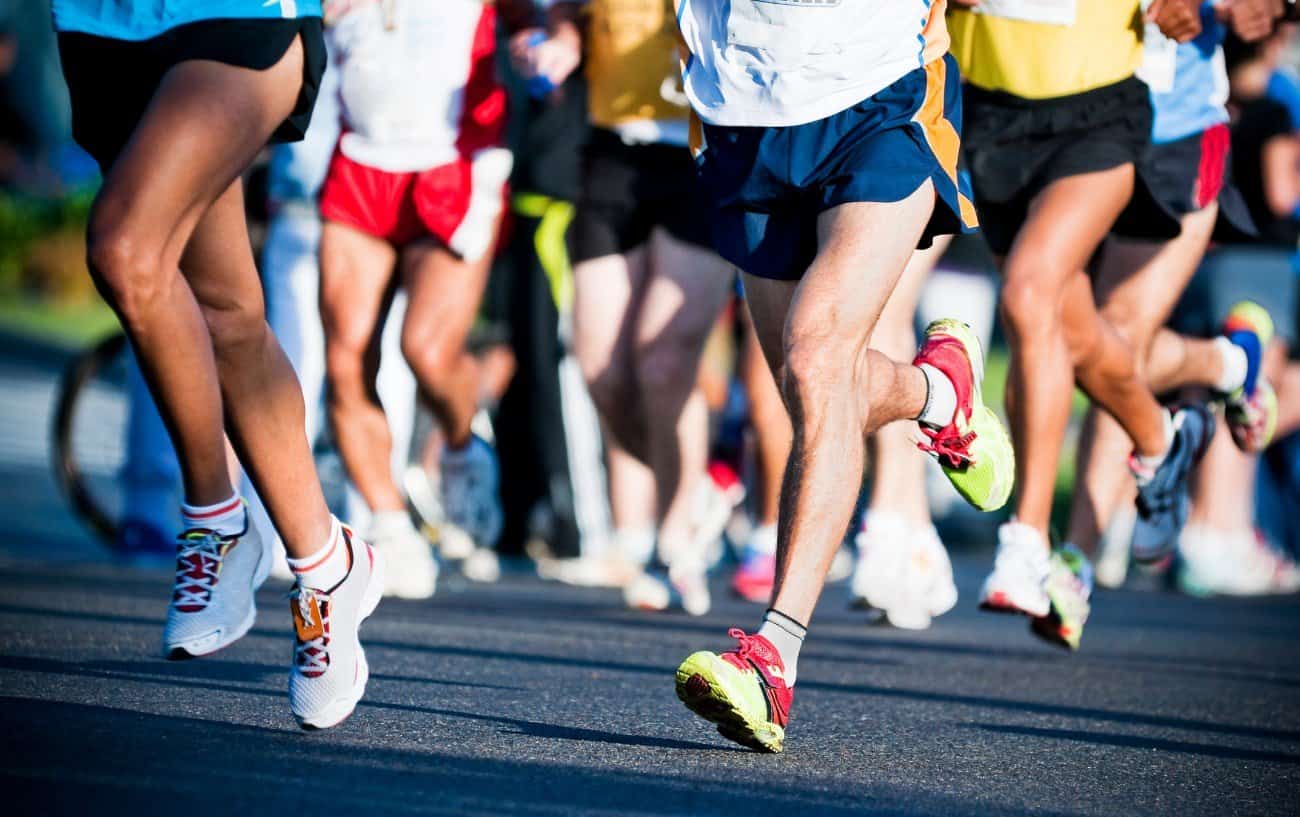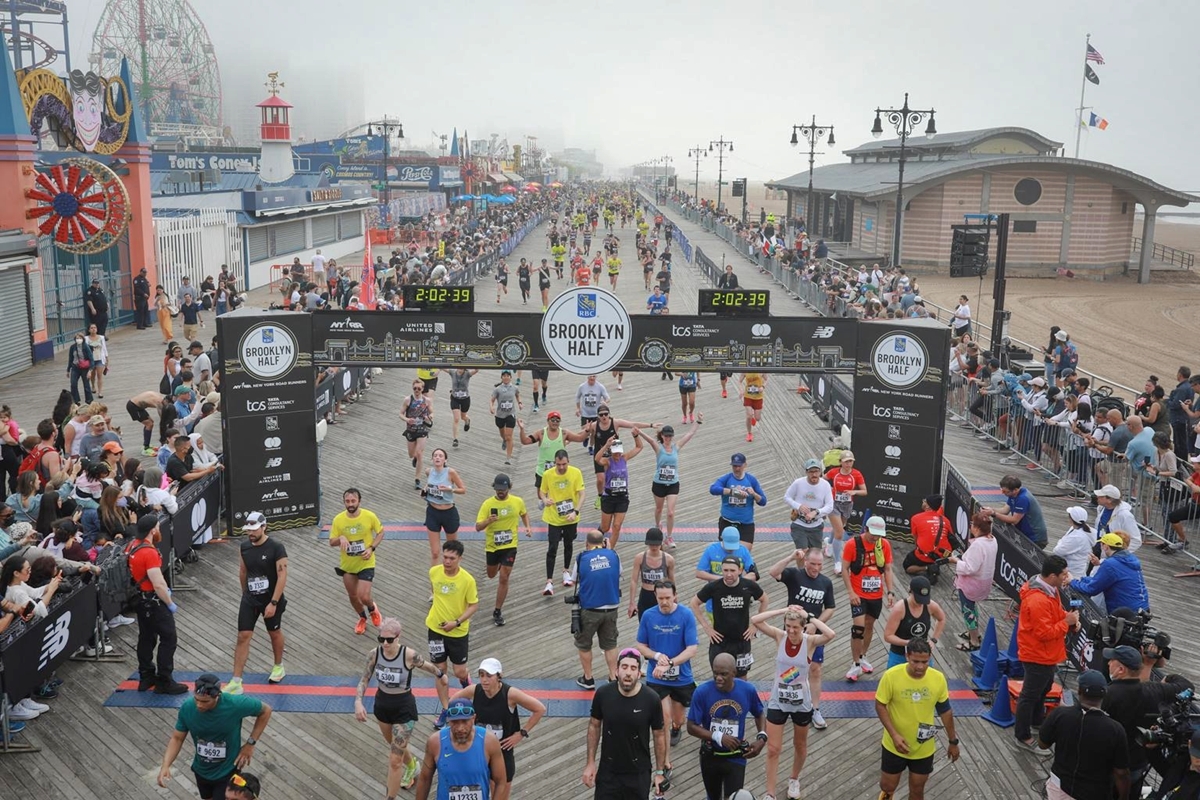

Featured
What Is Half Marathon Pace
Modified: January 22, 2024
Discover what a half marathon pace is and how it can help you achieve your running goals. Get featured tips and insights to optimize your training and race strategies.
Introduction
A half marathon is a popular distance in the running community, known for its challenging yet achievable nature. It combines elements of endurance and speed, making it a thrilling test for both novice and experienced runners. Whether you’re a seasoned athlete or a beginner looking to push your limits, understanding your half marathon pace is crucial to your success.
Pace is an essential concept in running that refers to the speed at which you cover a certain distance. Knowing your pace allows you to set realistic goals, monitor your progress, and tailor your training accordingly. In the context of a half marathon, your pace determines the time it takes for you to complete the race.
Why is pace important in half marathons? Well, your pace not only affects your finishing time but also impacts your overall race experience. Going out too fast can lead to early exhaustion, while starting too slow may mean missing out on potential personal bests. Finding the right balance and maintaining a consistent pace throughout the race can optimize your performance and help you achieve your goals.
Determining your half marathon pace involves a few key considerations. You need to take into account your current fitness level, your previous race times, and your training goals. Additionally, factors such as weather conditions, terrain, and elevation can influence your pace on race day.
Training at your half marathon pace is essential to build the necessary endurance and stamina. Incorporating tempo runs, interval training, and long runs into your training plan can help improve your speed and maintain your desired pace. It’s also crucial to listen to your body and adjust your pace as needed during training.
In this article, we will delve into the details of half marathon pace and how it impacts your race performance. We’ll explore the factors that can affect your pace and provide tips and strategies to help you improve and optimize your half marathon pace. So, let’s lace up our running shoes and get ready to dive into the world of half marathon running!
What is a Half Marathon?
A half marathon is a road race that covers a distance of 13.1 miles or approximately 21.0975 kilometers. It is a popular and widely recognized distance in the running world, attracting runners of all levels, from beginners to elite athletes. The half marathon distance falls between a 10K race (6.2 miles) and a full marathon (26.2 miles).
The half marathon has gained popularity over the years due to its accessibility and challenge. It provides a stepping stone for those who aspire to conquer a full marathon or simply want to test their endurance and push their limits. While it requires dedication and training, completing a half marathon is an achievable goal for many individuals.
Half marathons are often held as standalone races, but they can also be part of larger running events or charity fundraisers. These races may take place on roads, scenic trails, or even in urban settings, offering participants a unique and diverse experience.
What makes the half marathon distance appealing is that it strikes a balance between endurance and speed. It requires athletes to maintain a steady pace for an extended period, allowing them to challenge their aerobic capacity and mental fortitude. The race distance also provides an opportunity to implement pacing strategies, as runners strive to find their optimal speed while conserving enough energy to finish strong.
Half marathons attract a wide range of participants, from recreational runners seeking personal achievements to competitive athletes aiming for podium finishes. They offer a chance to be part of a vibrant running community, where individuals inspire and support one another to reach their goals.
Completing a half marathon is not just about the physical accomplishment; it’s also a journey of self-discovery and personal growth. It requires mental resilience, determination, and commitment to training. Crossing the finish line of a half marathon can instill a sense of pride, confidence, and a newfound belief in one’s capabilities.
Whether you’re a seasoned runner looking to push your limits or a novice setting out on your first significant running challenge, the half marathon distance presents an exciting and rewarding endeavor. It combines the thrill of competition with a celebration of personal achievement, making it an unforgettable experience for anyone willing to take on the challenge.
What is Pace in Running?
Pace in running refers to the speed at which you cover a certain distance. It is a fundamental concept that plays a crucial role in training, racing, and overall performance improvement. Understanding pace allows you to set realistic goals, track your progress, and develop effective strategies for optimizing your running performance.
Pace is typically measured in terms of minutes per mile or kilometers. For example, if you run a mile in 7 minutes, your pace is 7 minutes per mile. Similarly, if you complete a kilometer in 4 minutes, your pace is 4 minutes per kilometer. Knowing your pace helps you understand how fast or slow you are running and enables you to gauge your effort during training or races.
Pace provides a valuable tool for monitoring and adjusting your running intensity. It allows you to maintain a consistent effort level and prevents you from starting too fast or slowing down too much during longer runs or races. By understanding your pace, you can stay on track and avoid early burnout or exhaustion.
There are different types of pace that runners need to be familiar with:
- Easy Pace: This is a comfortable, conversational pace that allows for relaxed running and the ability to maintain a conversation while running. It is typically used for recovery runs and long, slow distance runs.
- Steady Pace: Also known as a “tempo” pace, this is a moderate effort level that is comfortably challenging. It is slightly faster than your easy pace and is often used for tempo runs or sustained pace training.
- Race Pace: This is the specific pace you aim to maintain during a race. It is faster than your steady pace and requires sustained effort for the duration of the race.
- Sprint Pace: This is an all-out, maximum effort pace that is used for short bursts of speed, such as during interval training or sprint workouts.
Understanding and monitoring your pace is essential for effective training and racing. It helps you set realistic goals, monitor your progress, and tailor your workouts accordingly. By manipulating your pace during training, you can target different energy systems, improve specific running abilities, and ultimately enhance your overall performance.
Pace can be measured using various tools and technologies, including GPS watches, smartphone apps, or even simply using a stopwatch or clock. These tools allow you to track and analyze your pace in real-time, providing valuable feedback on your running progress.
Whether you’re a beginner or a seasoned runner, understanding your pace is key to maximizing your running potential. It enables you to push your boundaries, improve your performance, and achieve your running goals. So, lace up your shoes, find your rhythm, and embrace the power of pace in your running journey.
Why is Pace Important in Half Marathons?
Pace plays a vital role in half marathons as it significantly impacts your overall race performance and experience. Understanding and maintaining the right pace can spell the difference between a successful and enjoyable race or a challenging and exhausting struggle. Here are a few reasons why pace is crucial in half marathons:
Efficient Energy Management: Pace is directly tied to energy expenditure. Setting an appropriate pace allows you to gauge and manage your energy levels throughout the race. Starting too fast or pushing beyond your capabilities can lead to early fatigue and a potential energy crash later on. By maintaining a steady pace, you can efficiently conserve your energy and maintain a sustainable effort.
Optimal Endurance Performance: Half marathons require a combination of endurance and speed. Pace sets the rhythm for your race and enables you to find a balance between pushing your limits and maintaining a manageable effort. Pacing yourself properly ensures that you have enough stamina to complete the entire distance while still feeling strong and capable towards the end of the race.
Achieving Race Goals: Pace helps you set realistic goals for your half marathon. Whether you’re aiming for a personal best, a specific time target, or simply to finish strong, knowing your pace enables you to strategize and plan accordingly. By implementing pacing strategies, such as negative splits or even pacing, you can increase your chances of achieving your desired race goals.
Mental Focus and Race Strategy: Pace plays a significant role in maintaining mental focus during a half marathon. It provides you with a tangible target to focus on and allows you to break the race down into manageable segments. By focusing on maintaining your pace, you can stay present in the race, push through challenging moments, and stay mentally engaged until the finish line.
Race Day Experience: Pace directly affects your overall race experience. Going out too fast and struggling to maintain the pace can lead to physical and mental exhaustion. On the other hand, finding your ideal pace and running within your capabilities can make the race more enjoyable and rewarding. Running at a comfortable pace allows you to soak in the atmosphere, appreciate the course, and even interact with fellow runners along the way.
By understanding the importance of pace in half marathons, you can develop a race plan that optimizes your performance. It’s essential to consider your fitness level, training progress, and race-day conditions when determining your pace strategy. By finding the right pace and executing your plan effectively, you’ll not only maximize your chances of achieving your goals but also enhance your overall half marathon experience.
How to Determine Your Half Marathon Pace
Determining your half marathon pace is a crucial step in preparing for a successful race. It allows you to set realistic goals, tailor your training, and execute an effective race strategy. Here are some methods to help you determine your half marathon pace:
Past Race Times: If you’ve previously completed a race, particularly a 10K or a similar distance, you can use your finishing time as a starting point to estimate your half marathon pace. You can use online calculators or conversion charts to get an idea of your expected pace for the longer distance. However, keep in mind that factors such as course difficulty and your fitness level at the time of the previous race should also be considered.
Training Runs: Utilize your training runs to gauge your half marathon pace. Incorporate tempo runs, where you run at a comfortably challenging pace for an extended period, into your training plan. This will give you a good sense of what pace feels sustainable for the half marathon distance. Additionally, long runs, where you cover a significant distance at an easy to moderate effort, can help you gauge your endurance and give you an idea of how your desired pace feels over longer distances.
Fitness Assessments: Conducting fitness assessments, such as a time trial or a 5K race, can provide insights into your current fitness level and help determine your half marathon pace. These assessments can help you gauge your current speed and give you an estimate of your average pace for a race twice the distance.
Venture into the Unknown: If you’re new to running and haven’t completed a race that can serve as a reference point, don’t worry. You can start by setting a conservative goal pace based on your training runs and progressively adjust it as you gain more experience and confidence. It’s essential to give yourself room to grow and adapt as you delve into the half marathon distance.
Professional Guidance: Consider seeking guidance from a running coach or a knowledgeable runner who has experience with the half marathon distance. They can provide valuable insights, analyze your training data, and help you determine an appropriate pace based on your specific goals and abilities.
Remember to be realistic and consider factors such as the course elevation, weather conditions, and your current fitness level when determining your half marathon pace. It’s better to start conservatively and gradually increase your pace as the race progresses than to start too fast and struggle to maintain it. Pacing yourself effectively will ensure a more enjoyable and successful race experience.
Once you have determined your half marathon pace, use it as a guide throughout your training. Incorporate workouts specifically geared towards maintaining and improving your pace. Practice running at race pace during your long runs or incorporate shorter tempo runs to develop the stamina and mental toughness required for race day.
By accurately determining your half marathon pace, you can set yourself up for a well-paced and realistic race performance. It will help you stay focused, make better decisions during the race, and ultimately lead to a more enjoyable and fulfilling race experience.
Factors Affecting Half Marathon Pace
Several factors can influence your half marathon pace on race day. Understanding and considering these factors can help you set realistic expectations and adjust your race strategy accordingly. Here are some key factors that can affect your half marathon pace:
Fitness Level: Your overall fitness level plays a significant role in determining your half marathon pace. The more consistent and structured your training, the better prepared your body will be to sustain a faster pace over the distance. Regular cardiovascular workouts, strength training, and endurance-building exercises can improve your fitness level and positively impact your race pace.
Training Volume and Intensity: The amount and intensity of your training can directly impact your half marathon pace. Gradually increasing your mileage and incorporating speed workouts like interval training and tempo runs can improve your speed and endurance, enabling you to maintain a faster pace on race day.
Course Terrain and Elevation: The course terrain and elevation can have a significant impact on your half marathon pace. Running on hilly or undulating terrain will generally slow your pace, as compared to running on a flat course. It’s important to factor in the course profile to adjust your expectations and strategy, especially if the route includes challenging hills or downhill sections that may affect your pace.
Weather Conditions: Weather conditions can greatly influence your pace during a half marathon. Running in extreme heat, high humidity, or strong winds can make it more challenging to maintain your desired pace. It’s important to consider the weather forecast leading up to the race and make adjustments to your pace and hydration strategies accordingly.
Race Day Fueling and Hydration: Proper fueling and hydration can impact your half marathon pace. Inadequate fueling or dehydration during the race can lead to fatigue and a decline in performance. Plan your nutrition and hydration strategy in advance, and practice it during your training runs to ensure you maintain your energy levels and optimize your pace on race day.
Mental Preparedness: Your mental state can affect your half marathon pace. A positive and focused mindset can help you stay motivated and maintain your pace, especially during challenging moments in the race. Mental strategies such as goal setting, positive self-talk, and visualization can contribute to maintaining an optimal pace throughout the race.
Crowd Support and Race Atmosphere: The support of spectators and the energy of a race atmosphere can have a positive impact on your pace. It can provide a boost of motivation and adrenaline, allowing you to maintain a faster pace. Similarly, running in a highly competitive race or with a group of runners aiming for similar goals can push you to maintain a faster pace.
These factors are not mutually exclusive, and often, multiple factors can have a combined effect on your half marathon pace. It’s essential to consider them during your training and adapt your race strategy accordingly. By understanding and accounting for these factors, you can set realistic goals, make adjustments as necessary, and maximize your performance on race day.
Tips for Training at Half Marathon Pace
Training at your half marathon pace is a crucial component of preparing for a successful race. It helps you build the necessary endurance and speed to maintain a consistent pace throughout the distance. Here are some tips to help you train effectively at your half marathon pace:
Gradual Progression: Start your training at a comfortable pace and gradually build up to your desired half marathon pace. It’s important to allow your body time to adapt to the increased intensity and mileage. Gradual progression helps reduce the risk of injuries and allows for a more sustainable training program.
Structured Training Plan: Follow a structured training plan that includes a combination of easy runs, long runs, tempo runs, and speed workouts. A well-balanced training plan will help improve your fitness, endurance, and running efficiency. It will also allow you to practice running at your half marathon pace during specific workouts.
Tempo Runs: Incorporate tempo runs into your training schedule. Tempo runs are runs done at a comfortably challenging pace, typically slightly faster than your race pace. These runs help improve your lactate threshold, enhance your endurance, and simulate the demands of maintaining a steady pace during the half marathon.
Interval Training: Include interval training sessions to improve your speed and efficiency. Interval training involves alternating between short bursts of high-intensity efforts and recovery periods. These workouts can help you improve your speed, build mental toughness, and prepare you to maintain your desired pace during the race.
Long Runs: Long runs are a crucial component of half marathon training. They improve your endurance and help you build the mental and physical stamina required for race day. During your long runs, practice running at your half marathon pace for a portion of the run to familiarize yourself with the effort level.
Practice Race-Like Conditions: Incorporate race-like conditions into your training to simulate the challenges of race day. This can include running on similar terrain, practicing fueling and hydration strategies, and even simulating the race day atmosphere during certain workouts or training runs.
Listen to Your Body: Pay attention to your body’s signals during training. If you’re consistently struggling to maintain your desired pace, it may be a sign that you need to adjust your training intensity or reassess your goals. It’s essential to find a balance between pushing yourself and allowing for adequate rest and recovery.
Consistency and Progression: Consistency is key when training at your half marathon pace. Aim to maintain a regular training schedule and gradually increase your mileage and intensity as your fitness improves. Consistent training builds the necessary strength and endurance to maintain your desired pace over the distance.
Recovery: Don’t neglect the importance of rest and recovery days in your training plan. Recovery allows your body to adapt to the training stress and can help prevent injuries. Incorporate rest days, easy runs, cross-training, and other recovery activities into your training schedule.
Remember, training at your half marathon pace is about finding the right balance between push and recovery. It’s essential to listen to your body, remain consistent, and adapt your training plan as needed. By incorporating these tips into your training, you will be better prepared to maintain your desired pace and achieve your goals on race day.
Strategies for Improving Half Marathon Pace
Improving your half marathon pace requires consistent training, dedication, and strategic approaches to enhance your speed and endurance. Here are some effective strategies that can help you boost your half marathon pace:
Incorporate Speed Workouts: Include interval training sessions and speed workouts in your training plan. These workouts involve running at a faster pace for shorter distances with recovery periods. Speed workouts improve your running economy, increase your lactate threshold, and help you develop the necessary speed and efficiency to maintain a faster pace during the half marathon.
Progressive Overload: Gradually increase the intensity and volume of your training. Progressive overload challenges your body and stimulates adaptations, ultimately leading to improved pace. Increase your mileage, tempo run distances, and interval repetitions systematically to avoid injury and ensure steady progress.
Implement Fartlek Runs: Fartlek runs involve alternating between periods of steady running and periods of faster-paced running. These runs are flexible and mimic the varied pace changes encountered during a race. Incorporating fartlek runs into your training can improve your ability to adjust and respond to changes in pace, enhancing your overall speed and stamina.
Strength Training: Include strength training exercises in your training routine to build muscular strength and power. Strong muscles help improve running economy and reduce the risk of injuries. Focus on exercises that target the muscles used in running, such as squats, lunges, calf raises, and core exercises.
Work on Running Form: Enhancing your running form can optimize your efficiency and improve your pace. Focus on maintaining a tall posture, landing midfoot, engaging your core, and maintaining a smooth arm swing. Consider getting a gait analysis done or working with a running coach to identify any form issues and make the necessary adjustments.
Strategic Pacing: Develop a solid race strategy that includes pacing guidelines. Start with a conservative pace and aim for negative splits, gradually increasing your speed as the race progresses. Pacing yourself strategically ensures you conserve energy for the later stages of the race and prevents early burnout.
Mental Conditioning: Mental preparedness is crucial for improving your half marathon pace. Train your mind to stay focused, positive, and resilient during challenging moments. Practice visualization techniques, positive self-talk, and mindfulness exercises to build mental toughness and maintain a strong pace throughout the race.
Consistency and Recovery: Consistency is key to improving your half marathon pace. Stick to your training schedule, but also prioritize rest and recovery. Allow your body time to adapt and repair through adequate sleep, proper nutrition, and active recovery. Overtraining can hinder progress and increase the risk of injury.
Race Simulation: Perform race simulations during your training to mentally and physically prepare for the demands of race day. Run longer training runs that mimic the race distance and practice running at your goal pace. This will provide a real-world scenario to refine your pacing strategy and build confidence in your ability to maintain your desired pace on race day.
Remember, improving your half marathon pace takes time, consistency, and patience. Be realistic with your goals and allow for gradual progress. By implementing these strategies and staying committed to your training, you can significantly enhance your half marathon pace and achieve personal bests.
Conclusion
Understanding and optimizing your pace in a half marathon is essential for achieving your goals and maximizing your race performance. By determining your half marathon pace, you can set realistic expectations and develop a race strategy that allows you to maintain a steady and efficient pace throughout the race.
A half marathon is a challenging yet achievable distance that requires a balance of endurance and speed. Factors such as fitness level, training volume and intensity, course terrain, weather conditions, and mental preparedness all influence your half marathon pace. By considering these factors and incorporating appropriate training strategies, you can improve your pace and achieve your desired race performance.
Training at your half marathon pace involves a combination of structured workouts, including tempo runs, interval training, and long runs. Consistency, gradual progression, and strategic overload are key to improving your speed and endurance.
Strategies such as speed workouts, fartlek runs, strength training, and mental conditioning can all contribute to enhancing your half marathon pace. Additionally, developing a strategic race plan, practicing strategic pacing, and incorporating race simulations can help you maintain your desired pace on race day.
Remember to listen to your body, prioritize rest and recovery, and stay committed to your training. Improvement in half marathon pace takes time, patience, and consistent effort. But with determination, smart training, and a focus on progression, you can achieve personal bests and experience the satisfaction and joy of crossing the finish line with a strong pace.
So, lace up your running shoes, embrace the challenge of the half marathon distance, and embark on a journey to surpass your limits and discover the exhilarating feeling of running at your optimal pace. With dedication and perseverance, you’ll unlock new levels of performance and personal fulfillment in the world of half marathons.
